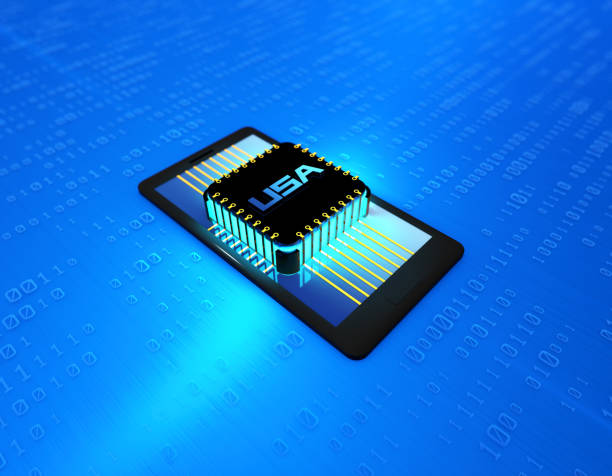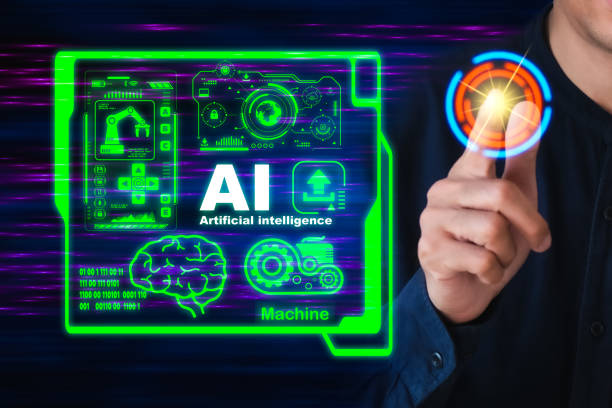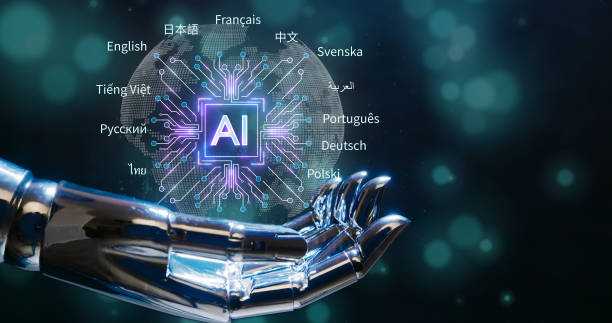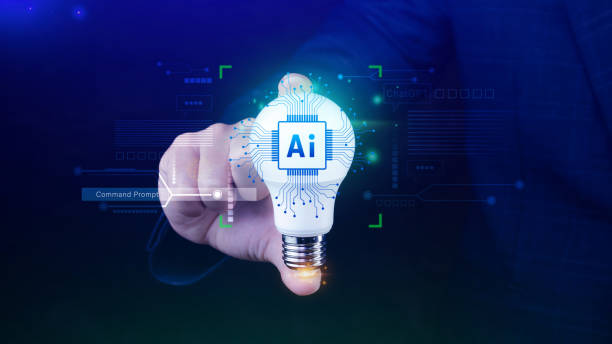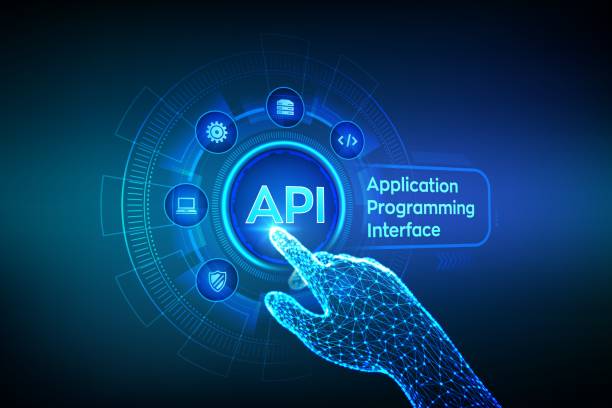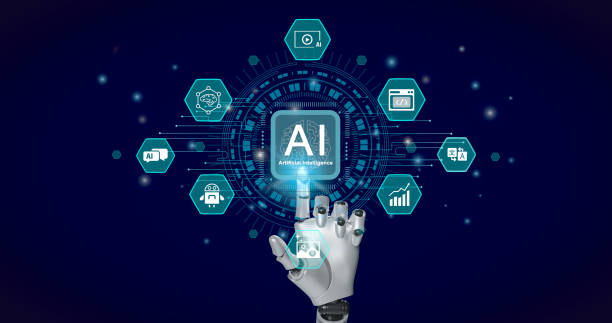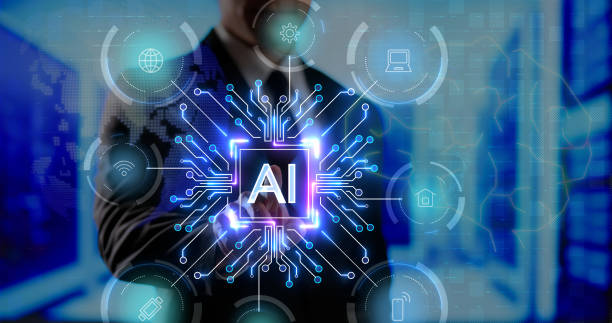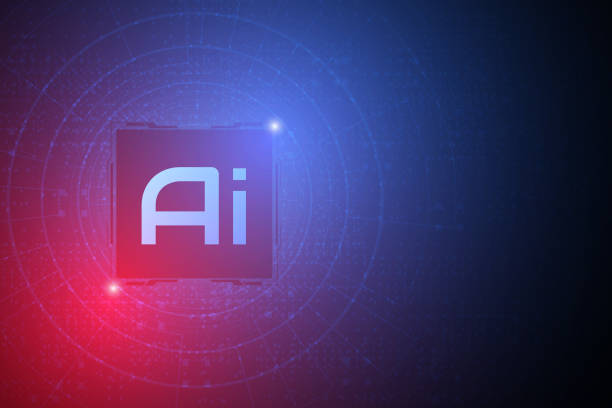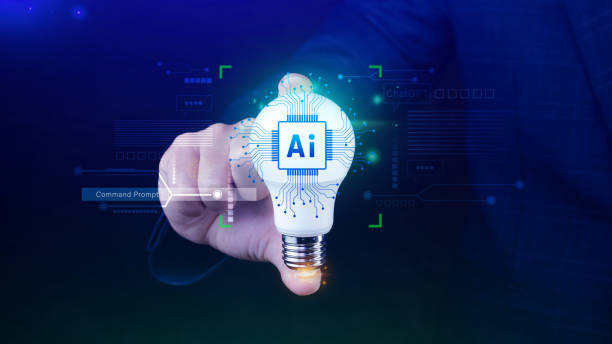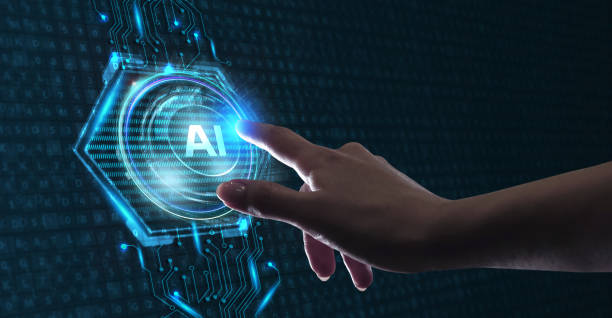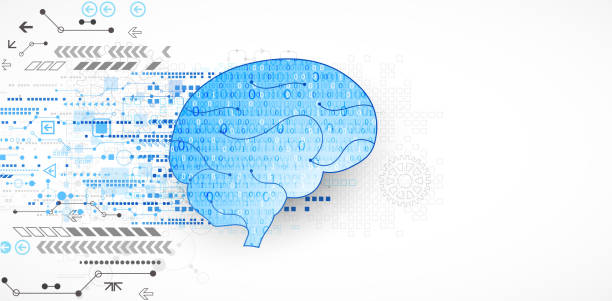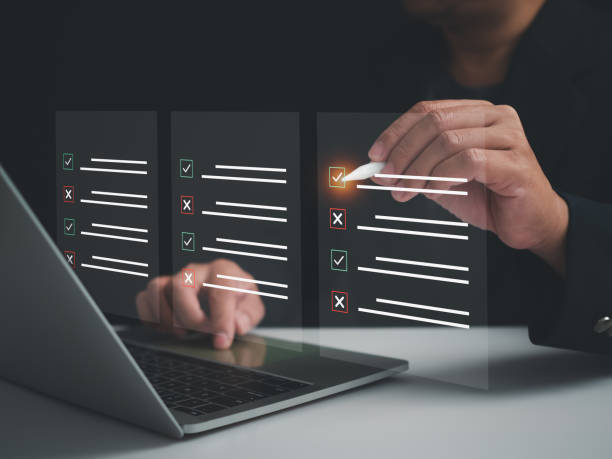What is an Artificial Intelligence Robot and How Does it Work?
#Artificial Intelligence Robot (AI Robot for short) is a combination of two key concepts: #Robotics and #Artificial Intelligence.
Simply put, an AI robot is a physical or virtual machine that uses artificial intelligence algorithms to perform tasks that typically require human intelligence.
These tasks can include learning, reasoning, problem-solving, natural language understanding, and machine vision.
In other words, an AI robot is not only capable of moving and performing physical operations, but it can also understand its surroundings, make decisions, and change its behavior based on the conditions.
The way an AI robot works usually involves the following steps:
- Information Reception The robot receives environmental information through sensors (such as cameras, microphones, touch sensors).
- Information Processing The received information is analyzed and interpreted by powerful processors and artificial intelligence algorithms.
This stage includes pattern recognition, object detection, and natural language understanding. - Decision Making Based on the information analysis, the robot decides what action to take.
This decision-making can be based on pre-defined rules, reinforcement learning, or other artificial intelligence algorithms. - Action Execution The robot performs the desired action using actuators (such as motors, arms, wheels).
- Learning The robot learns from its experience and improves its performance.
This learning can be done automatically or with human assistance.
In general, AI robots try to perform more complex tasks by simulating human cognitive processes and operate independently in different environments.
Artificial intelligence allows robots to interact with their environment and provide appropriate responses at the right time.
AI robots are reshaping various industries and will play an important role in the future.
Are you bothered by losing customers due to the outdated appearance or slow speed of your online store? The expert team at Rasaweb solves these problems by designing a professional online store!
✅ Increase customer trust and your brand’s credibility
✅ Blazing speed and excellent user experience
Get a free consultation with Rasaweb now ⚡
Diverse Applications of AI Robots in Various Industries
AI robots, due to their unique capabilities, have extensive applications in various industries.
These applications include:
- Manufacturing Industry AI robots can be used on production lines to perform repetitive and precise tasks, such as assembling parts, quality inspection, and product packaging.
These robots can increase productivity and reduce costs. - Healthcare In the field of healthcare, AI robots can be used in precise surgeries, assisting people with disabilities, providing remote medical care, and managing medications.
These robots can improve the accuracy and speed of providing medical services. - Customer Service Intelligent chatbot robots can act as virtual assistants in customer service, answering customer questions, solving their problems, and providing the required information.
These robots can increase the availability of customer service and improve customer satisfaction. - Transportation AI robots can be used in self-driving cars, drones, and intelligent transportation systems.
These robots can improve the safety and efficiency of transportation systems. - Agriculture AI robots can be used in precision agriculture, such as planting seeds, irrigation, harvesting crops, and spraying pesticides.
These robots can increase productivity and optimize the use of resources. - Finance In the financial field, AI robots can be used in data analysis, fraud detection, risk management, and providing financial advice.
These robots can improve the accuracy and speed of financial decision-making.
These are just a few examples of the diverse applications of AI robots in various industries.
With the advancement of technology, it is expected that the applications of these robots will become more extensive and complex in the future.
#AI robots are increasingly used not only in large industries but also in small and medium-sized businesses.
In the near future, we will likely see a wider presence of this technology in everyday life.
Robotics and artificial intelligence together have created a new world of possibilities.
Advantages and Disadvantages of Using AI Robots
Using AI robots has many advantages, but it also has disadvantages.
In this section, we will examine these advantages and disadvantages:
Advantages
- Increased Productivity AI robots can perform tasks faster and more accurately than humans, leading to increased productivity.
- Cost Reduction Using AI robots can reduce labor costs, training costs, and human errors.
- Improved Quality AI robots can perform tasks with high accuracy and repeatability, leading to improved quality of products and services.
- Performing Dangerous Tasks AI robots can perform dangerous and harmful tasks that are not suitable for humans.
- 24/7 Availability AI robots can work 24 hours a day, 7 days a week without the need for rest or vacations.
Disadvantages
- High Initial Cost Purchasing and implementing AI robots can have a high initial cost.
- Need for Expertise Maintaining and repairing AI robots requires skilled and trained professionals.
- Job Loss Automation and the use of AI robots can lead to job losses for some people.
- Ethical Concerns The use of AI robots raises important ethical questions about privacy, accountability, and discrimination.
- Technical Limitations AI robots still have limitations in some areas, such as intuitive understanding and creativity.
In general, using AI robots can have many benefits, but its disadvantages should also be considered and plans made to manage them.
Deciding to use this technology should be done considering all its positive and negative aspects.
Automation and its effects on the labor market are issues that need to be carefully considered.
| Advantages | Disadvantages |
|---|---|
| Increased Productivity | High Initial Cost |
| Cost Reduction | Need for Expertise |
| Improved Quality | Job Loss |
| Performing Dangerous Tasks | Ethical Concerns |
| 24/7 Availability | Technical Limitations |
Types of AI Robots Based on Application and Function
AI robots can be categorized into different types based on application and function:
- Industrial Robots These robots are designed to perform specific tasks in industrial environments, such as welding, painting, assembly, and packaging.
Industrial robots typically have high accuracy and speed and can work 24 hours a day. - Service Robots These robots are designed to provide services to humans, such as cleaning, caring for the elderly, delivering goods, and customer service.
Service robots typically have human interaction capabilities and can operate independently in various environments. - Medical Robots These robots are designed to assist doctors and nurses in providing medical services, such as precise surgeries, rehabilitation, and medication management.
Medical robots typically have high accuracy and safety and can help improve the quality of medical care. - Military Robots These robots are designed to perform military tasks, such as reconnaissance, bomb disposal, equipment transportation, and warfare.
Military robots typically have the ability to withstand harsh and dangerous conditions. - Agricultural Robots These robots are designed to assist farmers in performing agricultural tasks, such as planting seeds, irrigation, harvesting crops, and spraying pesticides.
Agricultural robots typically have the ability to work in open and difficult environments. - Space Robots These robots are designed to perform tasks in space, such as exploring planets, repairing satellites, and building space stations.
Space robots typically have the ability to withstand harsh space conditions.
In addition, AI robots can also be categorized based on their method of movement and physical structure, such as wheeled robots, legged robots, flying robots, and crawling robots.
Each type of robot has its own advantages and disadvantages and is suitable for specific applications.
IEEE Robotics & Automation Magazine is a good source for learning more about the types of robots.
Using AI robots in dangerous and difficult environments helps to save human lives.
Tired of losing customers due to poor online store design? Solve this problem forever with Rasaweb!
✅ Increase sales and the conversion rate of visitors to customers
✅ Smooth and engaging user experience for your customers⚡ Get a free consultation
Challenges and Future of AI Robots
AI robots, despite their remarkable advances, still face numerous challenges:
- Technical Challenges Developing AI robots that can operate independently in complex and unpredictable environments is still a major challenge.
Robots must be able to understand natural language, recognize objects, learn from experience, and solve complex problems. - Ethical Challenges The use of AI robots raises important ethical questions about privacy, accountability, discrimination, and security.
Laws should be developed to regulate the use of this technology to prevent its misuse. - Social Challenges Automation and the use of AI robots can lead to job losses for some people and increase social inequality.
Programs should be created to train and empower people in new fields so that they can adapt to the changes caused by this technology. - Security Challenges AI robots can be subjected to cyberattacks and used for malicious purposes.
Appropriate security measures should be taken to protect these robots against cyberattacks.
Despite these challenges, the future of AI robots looks very bright.
With the advancement of technology, robots are expected to become smarter, more capable, and more reliable.
AI robots can play an important role in solving many global problems, such as climate change, pandemics, and poverty.
The Future of Life Institute examines the dangers and opportunities arising from artificial intelligence.
The MIT Artificial Intelligence Laboratory is one of the leading research centers in the field of artificial intelligence.
Given the increasing advances, AI robots will soon become an integral part of our lives.
#AI robots have the power to change the world.
How to Choose and Buy the Right AI Robot
Choosing and buying the right AI robot requires a careful review of your specific needs and requirements.
Here are a few key points to help you in this process:
- Determine Needs First of all, you need to carefully determine what you want to use the AI robot for.
What tasks do you want to assign to it? What expectations do you have for its performance? - Research and Review After determining your needs, you should research and review the different types of AI robots available on the market.
Compare features, capabilities, prices, and user reviews. - Choose a Reputable Seller Purchase the AI robot from reputable and experienced sellers.
These sellers usually offer better after-sales service and can help you if a problem occurs. - Check Warranty and After-Sales Service Before buying, carefully review the warranty and after-sales service conditions.
Make sure that you can use the seller’s support services in case of a problem. - Test and Evaluate If possible, test and evaluate the robot before making a final purchase.
Check its performance in real conditions and make sure that it meets your needs. - Training and Maintenance After purchasing, receive the necessary training for proper use and maintenance of the AI robot.
Regular and proper maintenance can extend the life of the robot and prevent problems.
By following these tips, you can choose and buy the right AI robot that best meets your needs.
#AI robot is an important investment, so choose carefully.
Universal Robots is one of the leading companies in the production of collaborative robots.
Using AI robots in businesses can increase profitability.
Automation.com is a website that covers news and information related to industrial automation.
The Impact of AI Robots on Everyday Life
AI robots are already having a significant impact on our everyday lives, and this impact is expected to increase in the future:
- Smart Home AI robots are used in smart homes to control lighting, heating, cooling, security, and other devices.
These robots can make life easier and more comfortable. - Virtual Assistants Virtual assistants like Siri, Alexa, and Google Assistant use artificial intelligence to answer questions, perform tasks, and provide information.
These assistants can help us manage time and do everyday tasks. - Self-Driving Cars Self-driving cars use artificial intelligence to drive without the need for a human driver.
These cars can improve the safety and efficiency of transportation systems and reduce travel time. - Social Networks Social networks use artificial intelligence to suggest content, filter fake news, and detect inappropriate behavior.
This technology can help improve user experience and increase the security of social networks. - Online Shopping Online stores use artificial intelligence to suggest products, offer personalized discounts, and detect fraud.
This technology can help improve the shopping experience and increase sales. - Education Intelligent education systems use artificial intelligence to provide personalized training, evaluate student progress, and provide feedback.
This technology can help improve the quality of education and increase student motivation.
These are just a few examples of the impact of AI robots on our daily lives.
With the advancement of technology, these effects are expected to become more widespread and profound in the future.
Forbes has published an article on the applications of artificial intelligence in everyday life.
Using #AI robots in everyday life increases efficiency and comfort.
In the future, smart robots will play a much more prominent role in our lives.
| Application | Example |
|---|---|
| Smart Home | Lighting and Heating Control |
| Virtual Assistants | Siri and Alexa |
| Self-Driving Cars | Driverless Driving |
| Social Networks | Content Suggestion |
| Online Shopping | Product Suggestion |
| Education | Intelligent Educational Systems |
Security and Ethical Considerations in the Use of AI Robots
The use of AI robots brings important security and ethical considerations that should be addressed:
- Cybersecurity AI robots can be subjected to cyberattacks and used for malicious purposes.
Appropriate security measures should be taken to protect these robots against cyberattacks, such as the use of encryption, firewalls, and intrusion detection systems. - Privacy AI robots can collect a lot of personal information.
Laws should be developed to protect individuals’ privacy against the misuse of this information. - Accountability If an AI robot causes damage, who is responsible for compensating for the damage? Clear rules should be developed to determine accountability in such cases.
- Discrimination Artificial intelligence algorithms can unintentionally be discriminatory.
Efforts should be made to prevent the creation and spread of discrimination in artificial intelligence algorithms. - Transparency Artificial intelligence algorithms should be transparent and understandable.
There should be the possibility of reviewing and evaluating the performance of these algorithms. - Control There should be mechanisms to control AI robots to prevent them from going out of control and harming humans.
Observing these security and ethical considerations can help ensure the responsible and safe use of AI robots.
#AI robots should serve humans, not be against them.
The Center for AI Ethics at Harvard University examines ethical issues related to artificial intelligence.
Using #AI robots while observing ethical principles can help improve human lives.
#AI robots should be under human control and supervision.
The Electronic Frontier Foundation is an organization that defends digital rights.
Does your company’s website make a professional and lasting first impression on potential customers? Rasaweb, with its professional corporate website design, not only represents the credibility of your brand but also paves the way for your business growth.
✅ Create a powerful and reliable brand image
✅ Attract target customers and increase sales
⚡ Get a free consultation
Skills Required to Work with AI Robots
Working with AI robots requires a set of technical and non-technical skills:
- Programming To develop and customize AI robots, programming skills are needed, especially in Python, C++, and Java.
- Mathematics and Statistics Understanding the concepts of mathematics and statistics is essential for designing and analyzing artificial intelligence algorithms.
- Artificial Intelligence and Machine Learning Familiarity with artificial intelligence and machine learning algorithms is necessary for training and improving the performance of robots.
- Robotics Understanding the principles of robotics, such as movement, control, and sensors, is essential for working with AI robots.
- Problem Solving The ability to solve complex problems and provide innovative solutions to challenges related to AI robots is required.
- Teamwork The ability to work in a team and collaborate with various experts to develop and implement AI robots is essential.
- Communications The ability to communicate effectively with other team members, customers, and users to understand needs and provide solutions is necessary.
- Continuous Learning Given the rapid advancement of technology, the ability to learn continuously and stay up-to-date with the latest achievements is essential.
By acquiring these skills, you can become an expert in the field of AI robots and play an important role in the development and implementation of this technology.
#AI robots need skilled and trained specialists.
Coursera offers specialized courses in robotics.
Learning skills related to AI robots provides many job opportunities.
#AI robots are the future of jobs.
New Trends and Innovations in AI Robots
AI robots are rapidly evolving and advancing, and new trends and innovations are emerging in this field:
- Collaborative Robots (Cobots) Collaborative robots are designed to work alongside humans and assist them in performing tasks.
These robots typically have advanced sensors and safety systems that prevent them from harming humans. - Explainable AI (XAI) Explainable AI seeks to make artificial intelligence algorithms more transparent and understandable.
This can help increase trust in AI robots and their widespread use. - Reinforcement Learning Reinforcement learning is a machine learning method that allows robots to learn through trial and error.
This method is very effective for training robots in complex and unpredictable environments. - Computer Vision Computer vision allows robots to understand images and use them to perform various tasks.
This technology is crucial in applications such as object recognition, motion tracking, and navigation. - Natural Language Processing (NLP) Natural language processing allows robots to understand human language and communicate with humans in natural language.
This technology is crucial in applications such as chatbots, virtual assistants, and language translation. - Internet of Things (IoT) Integrating AI robots with the Internet of Things can help create smarter and more efficient systems.
For example, AI robots can use data from IoT sensors to optimize their performance.
These trends and innovations show that AI robots will play an even more important role in our lives in the future.
#AI robots are creating a new industrial revolution.
Robotics Business Review is a news source for the robotics industry.
Given recent advances, AI robots will soon be able to do things that previously seemed impossible.
#AI robots are pushing the boundaries of science and technology.
Frequently Asked Questions
| Row | Question | Answer |
|---|---|---|
| 1 | What is an artificial intelligence robot? | An AI robot is a machine capable of understanding, reasoning, learning, and problem-solving, and can perform complex tasks with relative autonomy. |
| 2 | What are the most important applications of AI robots? | The main applications include industrial production, customer service (chatbots), medicine and surgery, self-driving transportation, space exploration, and military affairs. |
| 3 | What is the main difference between an AI robot and a regular robot? | A regular robot only follows programmed instructions, while an AI robot can learn from data, make decisions, and adapt to new environments. |
| 4 | How do AI robots learn? | They identify patterns and improve their performance through machine learning algorithms (such as deep learning, reinforcement learning) and processing vast amounts of data. |
| 5 | Can AI robots have emotions? | Currently, AI robots do not have real emotions in the human sense. They can mimic or recognize emotions, but they do not understand or experience them. |
| 6 | What are the current limitations of AI robots? | Limitations include the need for large amounts of data, the inability to understand abstract concepts, the lack of real creativity, ethical issues, and the challenges of generalizability in new environments. |
| 7 | What is the role of AI in the development of humanoid robots? | AI helps humanoid robots to walk, maintain balance, understand their surroundings, interact with humans, and perform complex tasks. |
| 8 | How is the future of AI robots predicted? | It is predicted that AI robots will become smarter, more autonomous, and able to perform more complex tasks in everyday life and industry, and their interaction with humans will increase. |
| 9 | Can AI robots replace all human jobs? | It is unlikely that all human jobs will be replaced. Robots will take over many repetitive and dangerous tasks, but jobs that require creativity, empathy, and ethical judgment will remain. |
| 10 | What ethical and social challenges are raised by the spread of AI robots? | Challenges include issues related to privacy, data security, ethical decision-making by robots, impact on employment, and accountability in case of errors. |
And other services of Rasa Web Advertising Agency in the field of advertising
Intelligent Sales Automation: Designed for businesses that seek to analyze customer behavior through SEO-driven content strategy.
Intelligent Social Media: Professional optimization to increase sales using Google Ads management.
Intelligent Reportage: Transform sales with the help of intelligent data analysis.
Intelligent Website Development: A professional solution to increase click-through rates with a focus on intelligent data analysis.
Intelligent SEO: Designed for businesses that seek to increase click-through rates through marketing automation.
And more than a hundred other services in the field of internet advertising, advertising consulting, and organizational solutions
Internet Advertising | Advertising Strategy | Reportage Ad
Resources
The Role of Artificial Intelligence in the Future of Humanity
,


